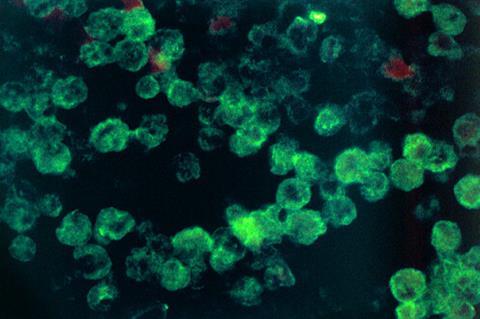Former public health epidemiologist Brian Labus, who teaches at the School of Public Health at the University of Nevada, Las Vegas, said Naegleria fowleri is a very rare disease.
The federal Centers for Disease Control and Prevention has tallied just 154 cases of infection and death from the amoeba in the US since 1962, he said. Almost half those cases were in Texas and Florida and only one was reported in Nevada before this week.
“I wouldn’t say there’s an alarm to sound for this,” Labus said. “People need to be smart about it when they’re in places where this rare amoeba actually lives.”
The organism is found in waters ranging from 77 degrees Fahrenheit (25 Celsius) to 115 degrees (46 C), he said.
The Southern Nevada Health District did not identify the teen who died, but said he may have been exposed to the microscopic organism during the weekend of September 30 in the Kingman Wash area on the Arizona side of the Colorado River reservoir behind Hoover Dam. The district publicized the case last Wednesday, following confirmation of the cause from the CDC.
The district and the Lake Mead National Recreation Area, which oversees the lake and the Colorado River, noted the amoeba only infects people by entering the nose and migrating to the brain. It is almost always fatal.
“It cannot infect people if swallowed, and is not spread from person to person,” the two agencies said. Both advised people to avoid jumping or diving into bodies of warm water, especially during summer, and to keep the head above water in hot springs or other “untreated geothermal waters” that pool in pocket canyons in the vast recreation area.
“It is 97% fatal but 99% preventable,” said Dennis Kyle, professor of infectious diseases and cellular biology and director of the Center for Tropical and Emerging Global Diseases at the University of Georgia. “You can protect yourself by not jumping into water that gets up your nose, or use nose plugs.”
The amoeba causes primary amoebic meningoencephalitis, a brain infection with symptoms resembling meningitis or encephalitis that initially include headache, fever, nausea or vomiting — then progress to stiff neck, seizures and coma that can lead to death.
Symptoms can start one to 12 days after exposure, and death usually occurs within about five days. There is no known effective treatment, and Kyle said a diagnosis almost always comes too late.
Kyle, who has studied the organism for decades, said data did not immediately suggest that waters warmed by climate change affected the amoeba. He said he knew of fewer than four cases nationwide.
A survey of news reports found cases in Northern California, Nebraska and Iowa. A CDC map showed most cases during the last 60 years in Southern US states, led by 39 cases in Texas and 37 in Florida.
“I think this year is sort of an average year for cases,” Kyle said. “But this was a very warm summer. The key point is that warmer weather tends to generate more amoeba in the environment.”
Not many labs regularly identify the organism, Kyle noted. He said that AdventHealth Central Florida recently joined the CDC with programmes able to identify it.








No comments yet